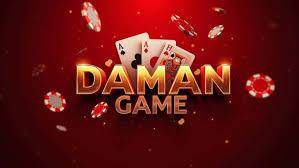The Daman game is just a traditional marble-based game that's captured the imagination of children and adults alike for generations. Originating in South Asia, it had been once a well liked pastime played in open grounds and dusty streets. The essence of the overall game is based on precision, strategy, and hand-eye coordination. Players use small, colorful marbles called “damans” to strike opponents'marbles out of a designated circle. Though simple in concept, the game requires skill and careful calculation to master.
Lately, the Daman game has undergone a digital transformation, locating a new house on the planet of mobile gaming. Online versions of Daman replicate the classic gameplay while adding modern graphics, multiplayer options, and rewards. Players can contend with others across the world, participate in tournaments, and earn virtual prizes. This digital adaptation has not just revived fascination with the standard sport but also introduced it to a new generation unfamiliar having its physical form daman club. The fusion of nostalgia and technology has made the Daman game both a cultural artifact and a contemporary entertainment option.
The guidelines of the Daman game are relatively straightforward but demand a top amount of skill. Each player takes turns aiming their marble at others within the circle, trying to knock them out while keeping their very own marble inside. Points are scored predicated on successful hits, and the game continues until one player emerges victorious. In online versions, these rules are adapted to match touch controls, where precision and timing are crucial. This simple yet challenging format is what keeps players engaged and returning for more.
Beyond being truly a game of skill, Daman carries cultural and social significance. In several communities, it's long served as a moderate for bonding, learning patience, and developing focus among children. Elders often recall fond memories of neighborhood competitions and friendly rivalries. The internet revival of Daman has reconnected many players with their roots, bridging generational gaps and reminding individuals of the joy within simple, skill-based play.
In conclusion, the Daman game stands as a shining exemplory instance of how traditional games can evolve with the times without losing their original charm. From dusty playgrounds to smartphone screens, it continues to entertain and challenge players worldwide. The game's mixture of strategy, nostalgia, and innovation ensures its devote both cultural history and modern gaming landscapes. Whether enjoyed real marbles beneath the sun or on an electronic platform, Daman remains an amazing celebration of play, precision, and community.
